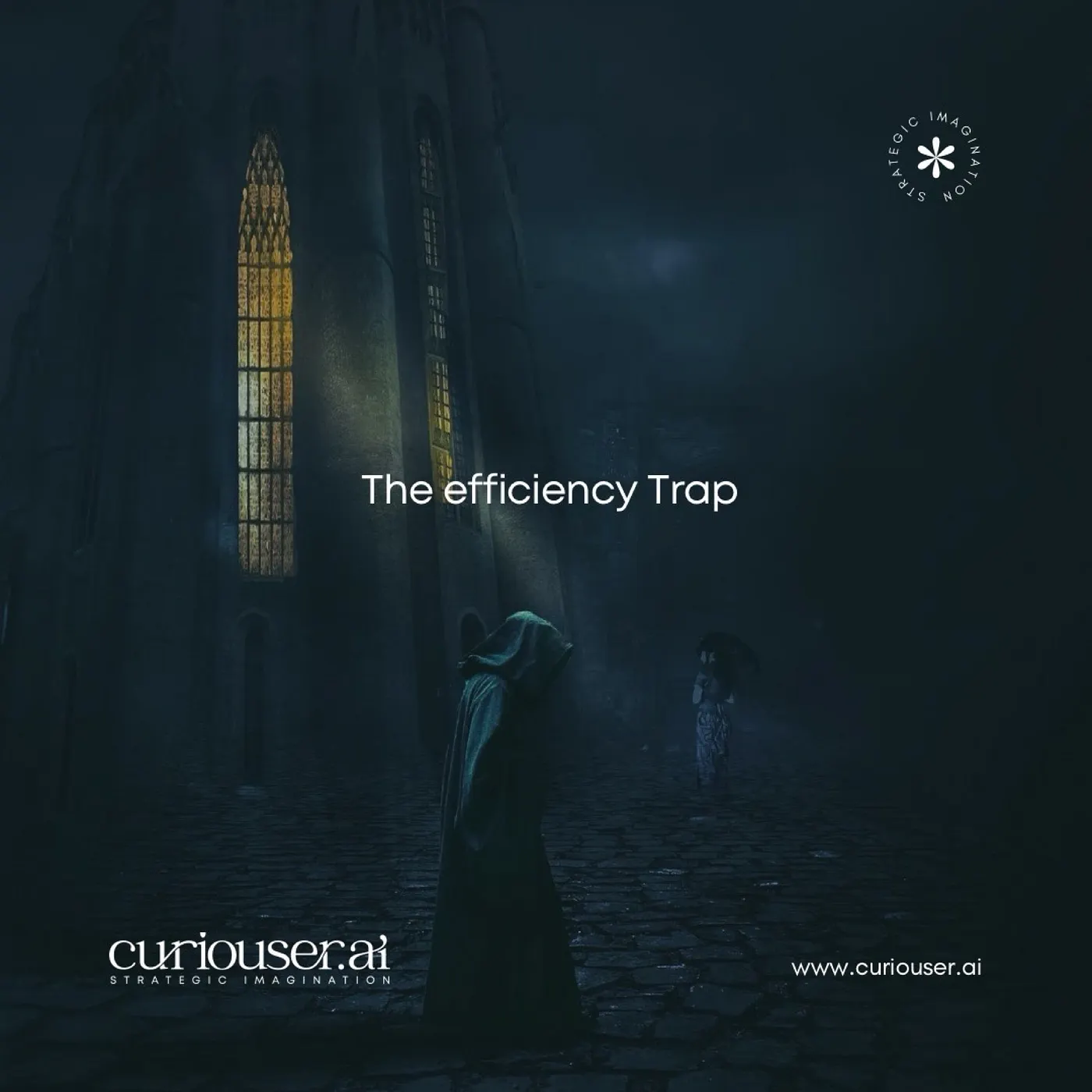

The Efficiency Trap
For 300 years, every major industrial revolution has been sold on one word: efficiency. The steam engine cut labor. The assembly line cut time. Software cut paperwork. And now, Generative AI is being pushed as the next great efficiency machine, a way to automate tasks, cut headcount, and juice margins.
It's a seductive story. CFOs love it because the ROI math looks easy: fewer people, lower costs. CEOs love it because they get to tell the board they're "AI-first." Consultants love it because they get to sell roadmaps, toolkits, and pilots.
But here's the problem: Generative AI isn't designed to shrink companies. And the attempt to sell it as an automation engine is not just wrong, it's actively destructive.
Why 95% of AI Pilots Fail
According to a recent MIT Sloan Management Review survey, more than 95% of enterprise AI initiatives fail to deliver on their promises.¹ McKinsey data echoes this, showing that while AI pilots are everywhere, scaling them into production rarely works.²
The reasons are simple:
- Pilots are sold as "cost savings in a box."
- Projects are delegated down the org chart, away from leadership.
- The use cases chosen are low-hanging fruit, automating rote processes, rather than strategically important functions.
In other words, the technology isn't the problem. The problem is how it's being sold.
The Illusion of ROI
At first glance, the "efficiency-first" logic seems airtight. If one lawyer can draft 10 contracts a week, and AI doubles that to 20, the firm saves 50% on labor. But in practice, those calculations collapse under scrutiny:
- Error Rates: GenAI models hallucinate. Gartner estimates enterprise AI error rates between 10 — 25%, unacceptable for legal, finance, or compliance-critical work.³
- Hidden Costs: Every "savings" pilot requires human review, new workflows, training, and change management. Those costs often exceed the projected ROI.
- Cultural Resistance: Employees aren't inspired by efficiency tools. They see them as threats. Adoption falters.
- Short-Term Gains vs Long-Term Growth: Cutting costs by shrinking people doesn't build new capabilities. It weakens the company's long-term capacity to innovate.
In fact, Korn Ferry reports that 62% of CEOs fear AI adoption could undermine their own leadership credibility if mishandled.⁴ They sense the danger but lack a new playbook.
Honey, I Shrunk the Company
When efficiency becomes the goal, companies end up celebrating smaller futures. They trade people for margins, creativity for automation, and long-term advantage for short-term numbers.
That's why so many AI initiatives look less like innovation and more like financial engineering. The result? Fewer jobs, declining morale, weaker products, and slower growth.
It's the corporate version of Honey, I Shrunk the Kids, except this time, the "kids" are entire companies.
What Works Instead: Augmentation, Not Automation
Generative AI is powerful. But its real potential lies in augmentation, not automation.
- Augmentation expands capacity — helping doctors analyze cases faster, teachers personalize lessons, and designers explore new creative directions.
- Augmentation elevates strategy — providing leaders with reflection, scenario modeling, and insights that extend imagination.
- Augmentation inspires talent — turning AI into a collaborator rather than a threat.
The best companies won't be the ones that shrink headcount with AI. They'll be the ones that grow talent, capability, and possibility with AI.
A Different Playbook
So what should CEOs do differently?
- Stop delegating AI strategy. AI isn't a tech project — it's a leadership project.
- Reject the automation-first narrative. It's a trap designed to sell pilots, not to build companies.
- Invest in augmentation. Look for use cases where AI empowers people to think bigger, not just faster.
- Measure the right things. Don't just track ROI in cost savings. Track ROI in capability, resilience, and growth.
As one Korn Ferry study put it bluntly: "AI cannot replace leadership. It can only make leadership more essential."⁴
The first wave of Generative AI adoption is proving to be a disappointment — not because the technology lacks power, but because companies are asking the wrong questions. They're mistaking efficiency for strategy. They're mistaking cost-cutting for innovation. The companies that win in the next era won't be the ones who use AI to shrink. They'll be the ones who use AI to imagine, to augment, and to grow. In short: stop shrinking your company with AI. Start growing it instead.
Written by Stephen B. Klein
Footnotes
- MIT Sloan Management Review, "Why So Many AI Pilots Fail," 2024.
- McKinsey & Co., "The State of AI in 2024."
- Gartner Research, "AI in the Enterprise: Error Rates and Business Risk," 2024.
- Korn Ferry, "CEO Perspectives on AI Adoption," 2025.


